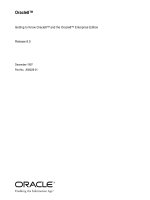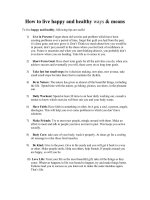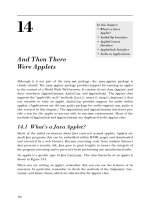Tài liệu Aids to Forensic Medicine and Toxicology, by W. G. Aitchison Robertson docx
Bạn đang xem bản rút gọn của tài liệu. Xem và tải ngay bản đầy đủ của tài liệu tại đây (1.14 MB, 598 trang )
The Project Gutenberg EBook of Aids to
Forensic Medicine and Toxicology, by
W. G. Aitchison Robertson
This eBook is for the use of anyone
anywhere at no cost and with
almost no restrictions whatsoever. You
may copy it, give it away or
re-use it under the terms of the Project
Gutenberg License included
with this eBook or online at
www.gutenberg.org
Title: Aids to Forensic Medicine and
Toxicology
Author: W. G. Aitchison Robertson
Release Date: August 10, 2006 [EBook
#19019]
Language: English
*** START OF THIS PROJECT GUTENBERG
EBOOK AIDS TO FORENSIC MEDICINE ***
Produced by Suzanne Lybarger, Brian
Janes, Annika Feilbach
and the Online Distributed Proofreading
Team at
AIDS
TO
FORENSIC
MEDICINE AND
TOXICOLOGY
BY
W.G. AITCHISON
ROBERTSON
M.D., D.Sc., F.R.C.P.E.
LECTURER ON FORENSIC MEDICINE,
SCHOOL OF MEDICINE, EDINBURGH;
LATE EXAMINER IN THE UNIVERSITIES
OF EDINBURGH AND ST. ANDREWS;
FOR THE TRIPLE BOARD; DIPLOMA IN
PUBLIC HEALTH, ETC.
NINTH EDITION
TWENTIETH
LONDON
BAILLIÈRE, TINDALL AND COX
8, Henrietta Street, Covent Garden
1922
PREFACE TO
NINTH EDITION
I trust that, having thoroughly revised the
"Aids to Forensic Medicine," it may
prove as useful to students preparing for
examination in the future as it has been
in the past.
W.G. AITCHISON ROBERTSON.
Surgeons' Hall,
Edinburgh,
November, 1921.
PREFACE TO
EIGHTH EDITION
This work of the late Dr. William
Murrell having met with such a large
measure of success, the publishers
thought it would be well to bring out a
new edition, and invited me to revise the
last impression.
This I have done, and while retaining
Dr. Murrell's text closely, I have made
large additions, in order to bring the
"Aids" up to present requirements. I
have also rearranged the matter with the
object of making the various sections
more consecutive than they were
previously.
W.G. AITCHISON ROBERTSON.
Surgeons' Hall,
Edinburgh.
June, 1914.
CONTENTS
PART I
FORENSIC MEDICINE
PAGE
I. Crimes 1
II. Medical Evidence 2
III. Personal Identity 10
IV.
Examination of Persons
found Dead
12
V.
Modes of Sudden
Death
13
VI. Signs of Death 16
VII.
Death from
Anæsthetics, etc.
19
VIII.
Presumption of Death;
Survivorship
20
IX.
Assaults, Murder,
Manslaughter, etc.
21
X.
Wounds and
Mechanical Injuries
21
XI. Contused Wounds, etc. 22
XII. Incised Wounds 23
XIII. Gunshot Wounds 24
XIV.
Wounds of Various
Parts of the Body
26
Detection of Blood-
XV.
Stains, etc.
30
XVI. Death by Suffocation 34
XVII. Death by Hanging 35
XVIII. Death by Strangulation 35
XIX. Death by Drowning 36
XX. Death from Starvation 38
XXI.
Death from Lightning
and Electricity
38
XXII.
Death from Cold or
Heat
39
XXIII. Pregnancy 40
XXIV. Delivery 41
XXV.
Fœticide or Criminal
Abortion
42
XXVI. Infanticide 44
Evidences of Live-
XXVII. Birth 46
XXVIII.
Cause of Death in the
Fœtus
50
XXIX. Duration of Pregnancy 50
XXX. Viability of Children 51
XXXI. Legitimacy 52
XXXII. Superfœtation 53
XXXIII. Inheritance 54
XXXIV. Impotence and Sterility 54
XXXV. Rape 55
XXXVI. Unnatural Offences 59
XXXVII. Blackmailing 60
XXXVIII. Marriage and Divorce 60
XXXIX. Feigned Diseases 63
XL. Mental Unsoundness 67
Idiocy, Imbecility,
XLI. Cretinism 68
XLII. Dementia 70
XLIII.
Mania, Lucid Intervals,
Undue Influence,
Responsibility, etc.
71
XLIV.
Examination of Persons
of Unsound Mind
76
XLV. Inebriates Acts 78
PART II
TOXICOLOGY
I. Definition of a Poison 80
II. Scheduled Poisons 80
III. Classification of
Poisons
83
IV. Evidence of Poisoning 85
V.
Symptoms and Post-
Mortem Appearances
of Different Classes of
Poisons
86
VI.
Duty of Practitioner in
Supposed Case of
Poisoning
89
VII. Treatment of Poisoning 90
VIII. Detection of Poison 91
IX. The Mineral Acids 94
X. Sulphuric Acid 95
XI. Nitric Acid 97
XII. Hydrochloric Acid 98
XIII. Oxalic Acid 98
XIV. Carbolic Acid 100
XV.
Potash, Soda, and
Ammonia
101
XVI.
Nitrate of Potassium,
etc.
103
XVII. Potassium Salts, etc. 103
XVIII. Barium Salts 104
XIX.
Iodine—Iodide of
Potassium
104
XX. Phosphorus 105
XXI.
Arsenic and its
Preparations
107
XXII.
Antimony and its
Preparations
112
XXIII.
Mercury and its
Preparations
113
XXIV.
Lead and its
Preparations
116
XXV.
Copper and its
Preparations
117
XXVI.
Zinc, Silver, Bismuth,
and Chromium
118
XXVII. Gaseous Poisons 120
XXVIII. Vegetable Irritants 123
XXIX. Opium and Morphine 124
XXX.
Belladonna,
Hyoscyamus, and
Stramonium
127
XXXI. Cocaine 128
XXXII. Camphor 129
XXXIII. Tetrachlorethane 129
XXXIV.
Alcohol, Ether, and
130
Chloroform
XXXV. Chloral Hydrate 134
XXXVI.
Petroleum and Paraffin
Oil
134
XXXVII.
Antipyrine, Antefebrin,
Phenacetin, and Aniline
135
XXXVIII.
Sulphonal, Trional,
Tetronal, Veronal,
Paraldehyde
137
XXXIX.
Conium and Calabar
Bean
138
XL. Tobacco and Lobelia 139
XLI. Hydrocyanic Acid 140
XLII. Aconite 143
XLIII. Digitalis 144
XLIV.
Nux Vomica,
145
Strychnine, and Brucine
XLV. Cantharides 146
XLVI. Abortifacients 147
XLVII.
Poisonous Fungi and
Toxic Foods
148
XLVIII.
Ptomaines or
Cadaveric Alkaloids
150
Index 152
AIDS TO FORENSIC
MEDICINE AND
TOXICOLOGY
PART I
FORENSIC MEDICINE
I.—CRIMES
Forensic medicine is also called
Medical Jurisprudence or Legal
Medicine, and includes all questions
which bring medical matters into
relation with the law. It deals, therefore,
with (1) crimes and (2) civil injuries.
1. A crime is the voluntary act of a
person of sound mind harmful to others
and also unjust. No act is a crime unless
it is plainly forbidden by law. To
constitute a crime, two circumstances
are necessary to be proved—(a) that the
act has been committed, (b) that a guilty
mind or malice was present. The act may
be one of omission or of commission.
Every person who commits a crime may
be punished, unless he is under the age
of seven years, is insane, or has been
made to commit it under compulsion.
Crimes are divided into misdemeanours
and felonies. The distinction is not very
definite, but, as a rule, the former are
less serious forms of crime, and are
punishable with a term of imprisonment,
generally under two years; while
felonies comprise the more serious
charges, as murder, manslaughter, rape,
which involve the capital sentence or
long terms of imprisonment.
A n offence is a trivial breach of the
criminal law, and is punishable on
summary conviction before a magistrate
or justices only, while the more serious
crimes (indictable offences) must be
tried before a jury.
2 . Civil injuries differ from crimes in
that the former are compensated by
damages awarded, while the latter are
punished; any person, whether injured or
not, may prosecute for a crime, while
only the sufferer can sue for a civil
injury. The Crown may remit punishment
for a crime, but not for a civil injury.
II.—MEDICAL
EVIDENCE
On being called, the medical witness
enters the witness-box and takes the
oath. This is very generally done by
uplifting the right hand and repeating the
oath (Scottish form), or by kissing the
Bible, or by making a solemn
affirmation.
1. He may be called to give ordinary
evidence as a common witness. Thus he
may be asked to detail the facts of an
accident which he has observed, and of
the inferences he has deduced. This









